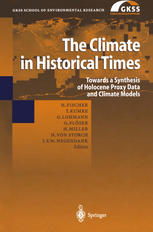

Most ebook files are in PDF format, so you can easily read them using various software such as Foxit Reader or directly on the Google Chrome browser.
Some ebook files are released by publishers in other formats such as .awz, .mobi, .epub, .fb2, etc. You may need to install specific software to read these formats on mobile/PC, such as Calibre.
Please read the tutorial at this link: https://ebookbell.com/faq
We offer FREE conversion to the popular formats you request; however, this may take some time. Therefore, right after payment, please email us, and we will try to provide the service as quickly as possible.
For some exceptional file formats or broken links (if any), please refrain from opening any disputes. Instead, email us first, and we will try to assist within a maximum of 6 hours.
EbookBell Team

4.3
58 reviewsAn Introduction to the KIHZ Project The description of the climate system and the quantification of its natural variability and dynamics is essential to assess an ongoing anthropogenic cli mate change and to validate climate and biogeochemical models to allow for reliable projections into the future. Because the spatio-temporal coverage of direct meteorological observations is rather limited, high-resolution and ab solutely dated climate archives represent the only key to a quantification of seasonal to millenial climate variations in the past. Furthermore, climate mod els provide insights into the major processes and causes relevant for climate variability on these time scales. Both approaches represent one side of the same medal, however melting both sides down to one combined effort is often hampered by obstacles defined by the different nature of the approaches. For instance, General Circulation Models (GCMs) per se deal with spatially resolved data representing real climate variables in the model world (such as temperature or precipitation) with each model run reflecting one possible realization of climate history under given boundary conditions. In contrast, the records of natural climate archives are influenced by climate variations as they took place in reality, however, are often representative of local climate conditions only. Moreover, the climate information deduced from natural archives is in nearly all cases based on climate proxies, whose relationship to real climate variables, the so called transfer function, has to be established beforehand.